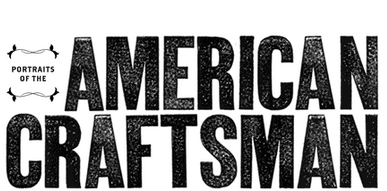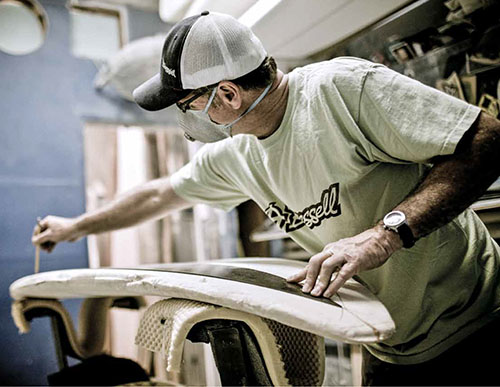Bessell Surfboards: making functional art.
Tim Bessell immerses himself in his work. Right now, that’s a literal statement.
“I was just shaping an eight-foot gun,” says Bessell, covered in sawdust. “Give me a second to clean off!”
By “gun” he means one of the five styles of surfboards Bessell makes (also: longboard, high-performance shortboard, funboard or paddleboard, and fish-shaped). After a long, thorough air-hose spraying, Bessell is ready to proselytize, eager to convert any and all to the benefits of creating and surfing with “the best boards in the world.”
“I shape and surf every day,” Bessell says. “The [mass-production] technology now has taken away the craftsmanship. I make functional art. I believe functional art is better because of the energy and soul you put into the board. Your love comes through, and the standards you set for yourself are higher. And that positive energy will transcend to the surfer.”
Bessell began surfing at age nine, and he quickly fell in love with not just the sport but also the tools. He loved everything about surfboards except their weight. Forty years ago the boards were usually more than fifty pounds, and carrying one was difficult for a “scrawny kid.”
He knew he wanted to make his own custom board, one that even a kid could carry. On his thirteenth birthday his brother gave him a longboard “plank” (the stripped-down beginning of what is then shaped into a custom board). He shaped it himself— and a lifelong career was born.
Bessell is largely self-taught, but he had a willing mentor in his grandfather, an aerospace design engineer for Boeing. Bessell would spend the summers with his grandfather—using his drafting table to design, learning about woodworking in his basement, asking questions about the value of composite materials.
Soon after, he got his first job in a surfboard factory, learning to shape and resin boards. It gave him invaluable experience. He learned the three basic phases of crafting a board: design (imagining the final product), roughing (taking the saws and planes and sanders to the plank), and refinement (measuring, fine sanding, wrapping it in resin).
Bessell says now that he didn’t learn as much as he thought he did.
“When I had done my first five hundred boards, I thought I was the king. I thought I knew everything,” Bessell says. “But by the time I’d done five thousand boards, I realized I didn’t know anything. Then I got to ten thousand, and I got more introspective. I realized I really didn’t know anything. It takes forever. It wasn’t until I made thirty thousand surfboards that I felt I really knew how to make a great board.” Bessell now makes one or two a day as he approaches his fifty thousandth board.
“Right now the only goal is to make the best surfboards in the world,” Bessell says. The industry has become more mass-produced, which has only set in greater relief the quality and craftsmanship he brings to the discerning surfer.
“Surfing is a sport. And as in every other sport, the elite athletes, 100 percent of them, demand the best custom-made equipment. There’s a reason for that.”






